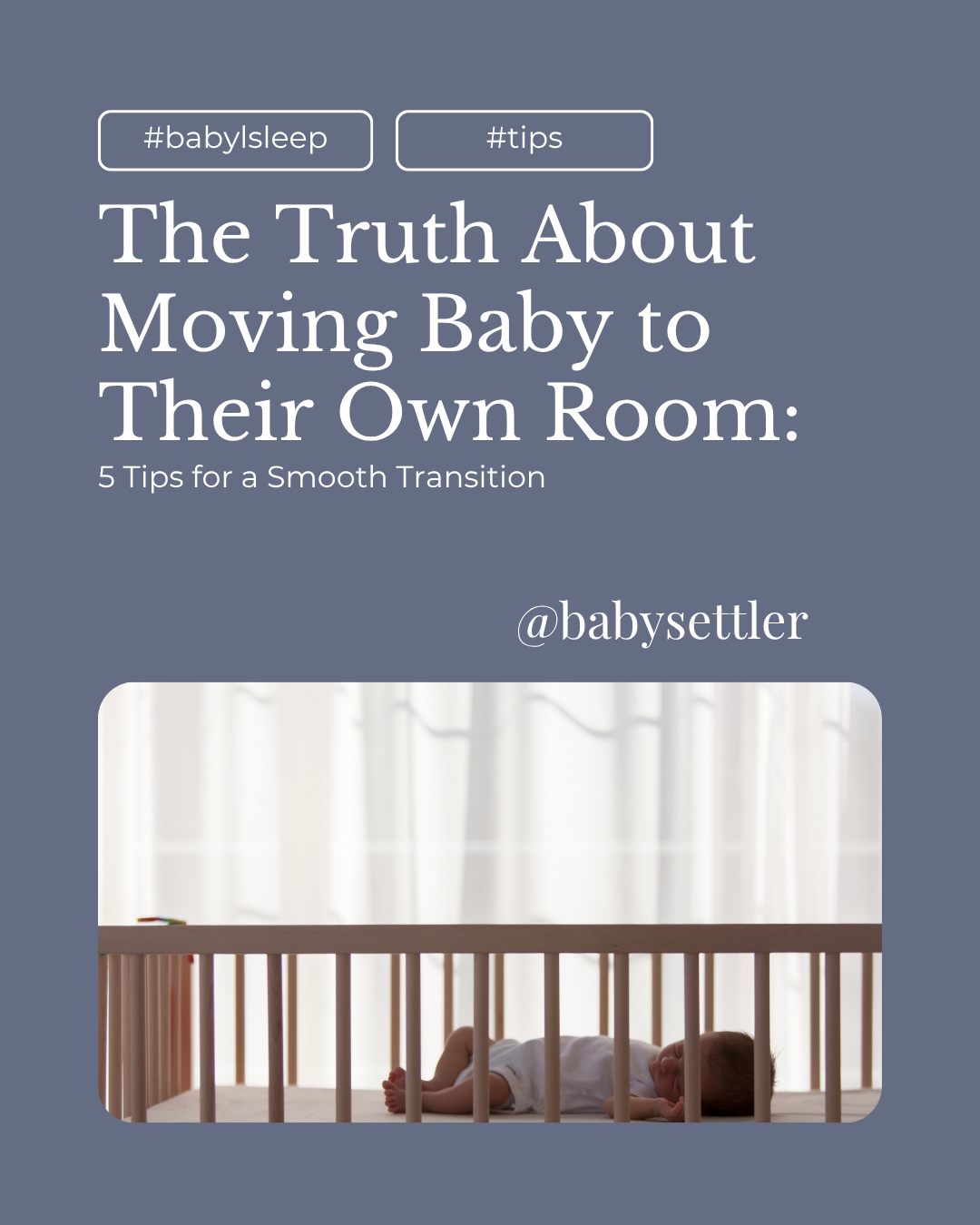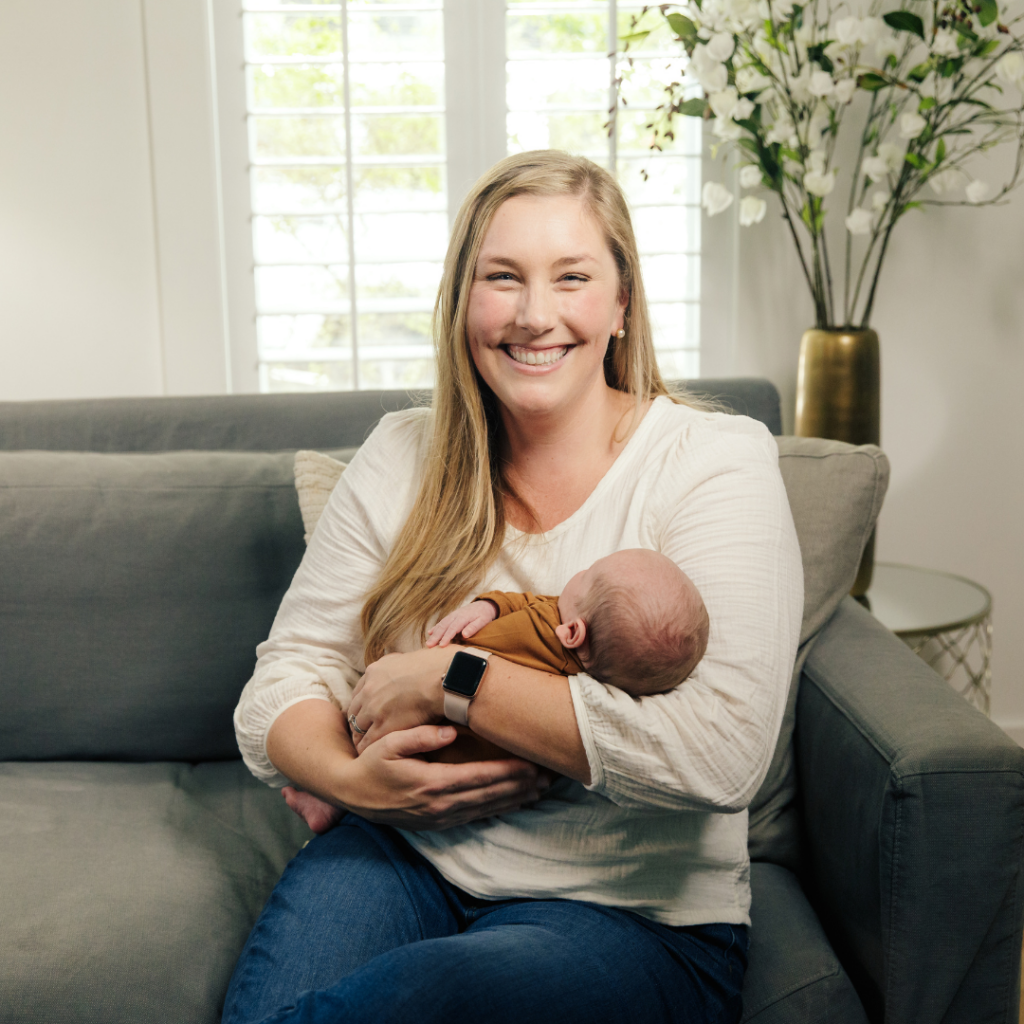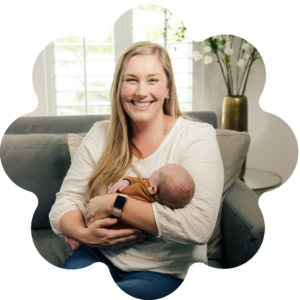
The Truth About Moving Baby to Their Own Room: 5 Tips for a Smooth Transition
When it comes to baby sleep, many parents find themselves asking, “Should I move my baby to their own room?” It’s a question that stirs up a lot of emotions and sometimes confusion. After all, every parent wants to help their baby sleep better. But the truth is, whether a baby sleeps better in their own room depends on various factors, including age, temperament, and how ready both parents and baby are for the change.
In this blog, we’ll debunk some common myths about sleep independence and explore 5 practical tips to help make the transition to your baby’s own room a smooth and successful one. Plus, I’ll share a bit about my own journey as a mother and a sleep consultant and offer resources to support your baby’s sleep and feeding needs.
Debunking Common Myths About Moving Baby to Their Own Room
Before we dive into the tips, let’s clear up some myths about moving your baby to their own room. One of the biggest misconceptions is that your baby will automatically sleep better once they’re in their own space. In reality, the move to their own room may not instantly fix sleep issues, especially in the early months.
Myth #1: “Baby will sleep better in their own room.”
The idea that moving your baby to their own room will instantly lead to better sleep is a common myth. While some babies may thrive in their own space, others might struggle with the transition. Sleep improvements typically depend on the baby’s age, temperament, and the environment in the new room.
Myth #2: “The earlier, the better.”
Many parents feel pressured to move their baby out of their room early. While the American Academy of Pediatrics (AAP) recommends that babies sleep in the same room as their parents for at least the first 6 months, there is growing evidence from sleep medicine experts that everyone sleeps better when they have their own sleep space. Research indicates that babies, like adults, experience better quality sleep when they are in their own designated sleep area, free from disturbances. According to a study by the National Sleep Foundation, independent sleep environments are linked to improved sleep quality for both babies and parents.
When is the Right Time to Move Baby to Their Own Room?
The decision to move your baby to their own room is very personal and should be based on your family’s needs.
Here are a few things to consider when deciding if your baby is ready for this transition:
- Age and Development: Babies under 4-6 months may benefit from the reassurance of being close to their parents, but after 6 months, many babies are ready to start practicing sleep independence.
- Temperament: Some babies adjust quickly, while others may need more time. Your baby’s temperament is a huge factor in whether they’re ready for the move.
- Signs of Readiness: Look for signs that your baby is sleeping longer stretches at night or can self-soothe. These are indicators that your baby might be ready for their own room.
5 Tips for a Smooth Transition to Baby’s Own Room
The transition from room-sharing or co-sleeping to sleeping in their own room can feel daunting, but these 5 tips will help make the move smoother for both you and your baby.
Split the Night: Move Baby to Their Own Room After the 2-3AM Feed
If you’re hesitant about the full transition, start by splitting the night. Keep your baby in your room until their early AM feed (usually around 2-3 AM). After that, you can move them to their own room for the remainder of the night. This allows you to gradually introduce them to their new sleep space while still offering the comfort of having them close by during the early part of the night.
Do Daytime Naps in Their Room
Before fully transitioning your baby to their room at night, start doing daytime naps in the new space. This helps your baby get used to the environment during the day when they’re more likely to be in a lighter sleep. If possible, replicate the nighttime routine for naps, including dim lights, white noise, and a soothing atmosphere.
Change Diapers in Their Room
Start doing as much of your baby’s care as possible in their new room. This includes diaper changes. If your baby is used to being changed in your room, the unfamiliar setting of a new space could disrupt their routine. By gradually shifting care routines to their new room, your baby will start to associate that space with comfort and security.
Feed in Their Room
If you’re breastfeeding or bottle-feeding, try feeding your baby in their new room. For many parents, night feedings happen in the comfort of the parents’ room, but by moving this routine into their nursery, you’re reinforcing that the new space is where all comfort and care happens. This can ease the transition and make the space feel more familiar.
Give Yourself Grace – You’re on Your Own Timeline
Finally, remember that the transition doesn’t need to be perfect. Every baby is different, and you know what’s best for your child. If it takes a few nights (or weeks) for your baby to adjust, that’s completely normal. Be kind to yourself through this process, and take it at your own pace.
Safe Sleep Practices for Baby’s New Room
As you’re preparing for the big move, it’s important to consider safe sleep practices. The AAP recommends the following guidelines for creating a safe sleep environment for your baby:
Back to Sleep: Always place your baby on their back to sleep, whether it’s in their crib or bassinet.
Firm Mattress: Use a firm mattress with a fitted sheet and avoid any loose bedding, pillows, or stuffed animals.
Room Sharing, Not Bed Sharing: While it’s safe for babies to sleep in the same room as you, bed-sharing is not recommended due to the risk of suffocation or accidental injury.
Temperature Control: Keep the room cool to prevent overheating. Use breathable fabrics and avoid heavy blankets.
A Little About Me: Helping You Through the Sleep Transition
As a labor & delivery nurse, IBCLC, and a mom of four, I understand the challenges that come with sleep transitions. Over the years, I’ve helped countless families navigate the complexities of baby sleep, including the transition to their own room. That’s why I created The Guide to Dropping Nighttime Feeds and Cliff Notes for Baby Sleep Routines to provide practical, evidence-based solutions to help parents like you get the sleep and rest they deserve. These guides offer step-by-step strategies that help make nighttime transitions smoother for both parents and babies.
Ready to Get Started?
You don’t have to wish away these early days with your little one. It’s totally possible to enjoy this precious time while ensuring everyone gets the sleep they need. Download my Ultimate Guide to Nighttime Weaning today, and let’s turn those sleepless nights into peaceful ones!
Nighttime weaning can feel daunting, but you’ve got this! With the right knowledge and support, it can be a breeze. Remember, you’re not alone in this journey—we’re in this together. Get your guide now and let’s embrace those sweet, restful nights ahead!
In Your Corner, Always!
Hillary- The Baby Settler





